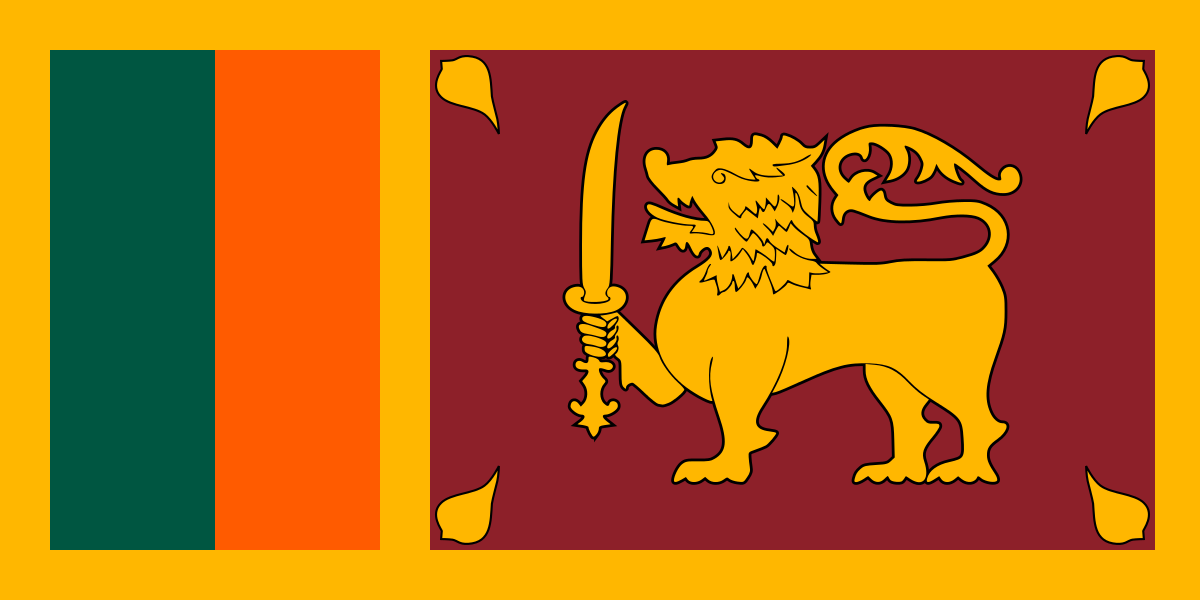The first Sinhalese arrived in Sri Lanka late in the 6th century B.C., probably from northern India. Buddhism was introduced circa 250 B.C., and a great civilization developed at the cities of Anuradhapura (kingdom from circa 200 B.C. to circa A.D. 1000) and Polonnaruwa (from about 1070 to 1200). In the 14th century, a south Indian dynasty established a Tamil kingdom in northern Sri Lanka. The Portuguese controlled the coastal areas of the island in the 16th century and the Dutch in the 17th century. The island was ceded to the British in 1796, became a crown colony in 1802, and was formally united under British rule by 1815. As Ceylon, it became independent in 1948; its name was changed to Sri Lanka in 1972. Tensions between the Sinhalese majority and Tamil separatists erupted into war in 1983. After two decades of fighting, the government and Liberation Tigers of Tamil Eelam (LTTE) formalized a cease-fire in February 2002 with Norway brokering peace negotiations. Violence between the LTTE and government forces intensified in 2006, but the government regained control of the Eastern Province in 2007 and by May 2009, the remnants of the LTTE had been defeated. Since the end of the conflict, the government has enacted an ambitious program of economic development projects, many of which are financed by loans from the Government of China. In addition to efforts at reconstructing its economy, the government has resettled more than 95% of those civilians displaced during the final phase of the conflict and released the vast majority of former LTTE combatants captured by Government Security Forces. At the same time, there has been little progress on more contentious and politically difficult issues such as reaching a political settlement with Tamil elected representatives and holding accountable those alleged to have been involved in human rights violations and other abuses during the conflict.
Sri Lanka is a presidential republic.
Source: CIA World Factbook
Members:
Resources
Displaying 6 - 10 of 17Land Acquisition Act, 1950
An Act to make Provision for the Acquisition of Lands and Servitudes for Public Purposes and to provide for matters connected with or incidental to such provision
Land Development Regulations 2010.
These Regulations establish administrative procedures, in particular: tax and levy to be paid where the holding is 10 Acres or less in extent or over 10 Acres in extent. They provide for: (a) nomination tendered after prescribed period; (b) cancellation of a nomination; (c) second or any subsequent nomination; (d) cancellation and a second or subsequent nomination.
Amends: Land Development Ordinance 1935 (No. 19 of 1935). (1973)
Land Acquisition Regulations, 2008.
These Regulations establish the basis for assessing the market value of any land or the compensation for any injurious affection caused by the acquisition of land. Market Value should be assessed as follows: in case part of a land is acquired and when its value as a separate entity deems to realize a value proportionately lower than the Market Value of the main land the compensation should be proportionate to the value of the main land.
Determination of areas of Agrarian Development Council in different Districts under Section 51 of Agrarian Development Act No. 46 of 2000.
By virtue of the powers vested by Section 51 of the Agrarian Development Act No. 46 of 2000, I, M. A. S. Weerasinghe, Commissioner General of Agrarain Development determine that the area of the Authority of Agrarian Service Committee 9/4 Ambalanthota in the Ambalanthota Divisional Secretary's Division and Agrarian Service Committee 9/15 Meegahajandura in the Suriyawewa Divisional Secretary's Division in the Electorate Thissamaharama in Hambanthota District published in the Gazette (Extraordinary) No.
Order declaring that the land in Ward No. 37 Kollupitiya, in Colombo District urgently require an Urban Development Project.
This Order, by virtue of the powers vested in Section 2 of the Urban Development Projects (Special Provisions) Act, No. 2 of 1980. I, Mahinda Rajapaksa, President of Democratic Socialist Republic of Sri Lanka and the Minister-in-charge of Defence and Urban Development, establish that the land specified in the schedule urgently requires an Urban Development Project. The Land bearing Asst. Nos. 106 & 106A and depicted as Lot No. 2 in Plan No. 2775 dated 27.01.2006 prepared by D. D. C.



